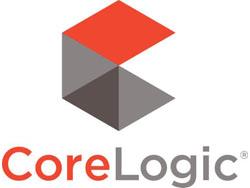CoreLogic Releases Q3 Home Equity Analysis
Irvine, CA, December 16, 2015—Two-hundred-and-fifty-six thousand properties regained equity in the third quarter of 2015, bringing the total number of mortgaged residential properties with equity at the end of Q3 2015 to approximately 46.3 million, or 92% of all homes with an outstanding mortgage, according to CoreLogic.
Nationwide, borrower equity increased year over year by $741 billion in Q3 2015.
The total number of mortgaged residential properties with negative equity stood at 4.1 million, or 8.1%, in Q3 2015. That was down 4.7% quarter over quarter from 4.3 million homes, or 8.7%, compared with Q2 2015 and down 20.7% year over year from 5.2 million homes, or 10.4%, compared with Q3 2014.
For the homes in negative equity status, the national aggregate value of negative equity was $301 billion at the end of Q3 2015, declining approximately $8.1 billion from $309.1 billion in Q2 2015, a decrease of 2.6%. On a year-over-year basis, the value of negative equity declined overall from $341 billion in Q3 2014, representing a decrease of 11.8% in 12 months.
Of the more than 50 million residential properties with a mortgage, approximately 8.9 million, or 17.6%, have less than 20% equity (referred to as “under-equitied”) and 1.1 million, or 2.2%, have less than 5% equity (referred to as near-negative equity).
“Home price growth continued to lift borrower equity positions and increase the number of borrowers with sufficient equity to participate in the mortgage market," said Frank Nothaft, chief economist for CoreLogic. "In Q3 2015 there were 37.5 million borrowers with at least 20% equity, up 7% from 35 million in Q3 2014. In the last three years, borrowers with at least 20% equity have increased by 11 million, a substantial uptick that is driving rapid growth in home equity originations.”
“Homeowner equity is the largest source of wealth for many Americans,” said Anand Nallathambi, president and CEO of CoreLogic. “The rise in home prices, expected to be at least 5% in 2016, will continue to build wealth and confidence across America. As this process continues, it will provide support for the housing market and the broader economy throughout next year.”
